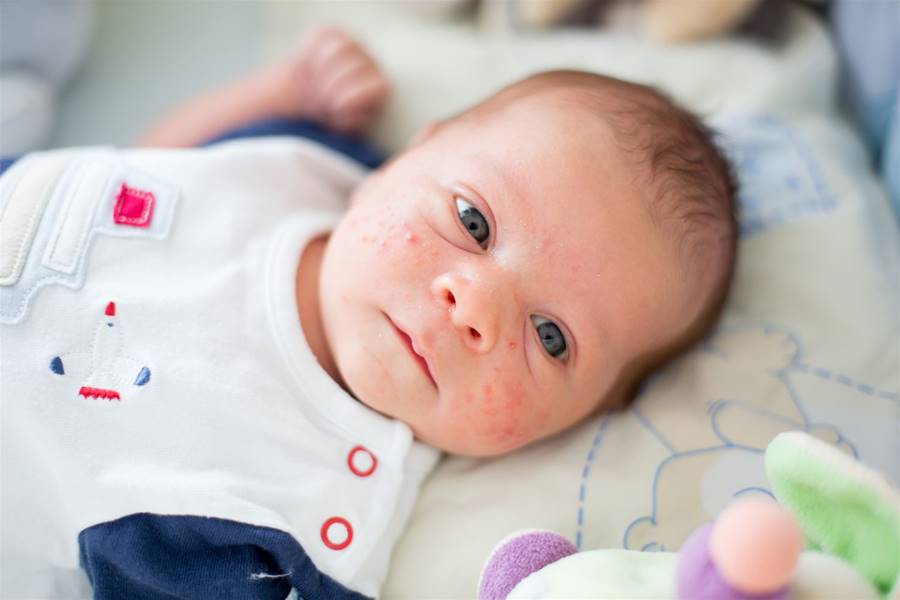

When you have a newborn, alarm bells are seemingly going off in your head every other hour. Is your baby pooping enough? Napping enough, or too much? Do you need to be worried about hiccups or acid reflux or cradle cap? Determining when something is normal or when to be concerned can be exhausting, especially for sleep-deprived new parents.
Here, we're removing the mystery from one particular newborn occurrence: baby acne. You may be alarmed at first if you spot acne on your baby's face, but rest assured, this is a common skin condition in young babies. We turned to experts to learn more about why babies get acne on their face, what it looks like, and how to treat it.
Baby Acne
Baby acne is a broad term for a common skin condition affecting infants. It can present as reddened or white bumps on their skin, surrounded by mild inflammation. While often appearing on the face, baby acne can also appear on the body. It typically resolves on its own within a few weeks, but if you have concerns, you should reach out to a pediatrician or health care provider.
When we picture baby acne, we might think of generic reddened pimples that we're used to seeing on our own faces. But in truth, there are actually two types of baby acne.
The first type of baby acne is known as neonatal cephalic pustulosis, or neonatal acne.
Lawrence Eichenfield, M.D., the chief of pediatric and adolescent dermatology at Rady Children's Hospital-San Diego, explains that these are superficial pus bumps that are technically not the same as the acne we commonly think of. However, since they present similarly, they are referred to underneath the acne umbrella. "Neonatal acne is mostly on the face, but can appear on the scalp and occasionally the chest and back," says Dr. Eichenfield, adding that you might notice this within the first few weeks of your baby's life.
The other type of baby acne is known as infantile acne. "This is very similar to the acne seen in teens and young adults," explains Dr.
Eichenfield. "It will be restricted to the face, and occurs usually a little later than the first few weeks of life."

